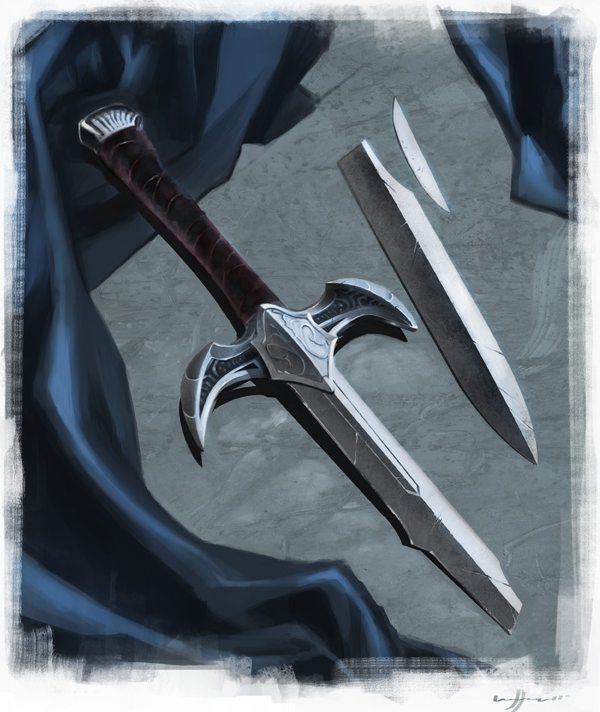One of the things I read in the campaign book was the Gundancer Prestige class. Its geared primarily toward a monk's use, but could be used by other classes. However how does one convert this over to 5th Edition?
Well I could just see if someone else did this, but where's the fun in all that?
So I wrote up something for use in our game, and I figured I'd share what I have. Keep in mind that this is not class specific and meant to be usable by any class that takes it up. It is however still built to follow the monk's advancement path.
----------------------------------------------------------------------------------------------
 |
| Image from the Film: Equilibrium...a Monk/Gunman using Gun-Fu. |
Gundancer – Alternate Class Advancement (All Classes)
This is a class advancement that can be chosen
at 3rd Level in the place of a classes normal selection of
specializations for a class. Note that
the levels noted below where a character would gain an effect may change based
upon the class. This conversion is built
primarily off of referencing the Monk class.
Gun Mastery
Starting at 3rd level, the character learns
the way of the gun and is highly skilled in the use of firearms. They gain proficiency in all high-tech simple
weapons and martial firearms (if they do not already possess those
proficiencies). When using a firearm or
other ranged weapon in melee combat the character is no longer at disadvantage
on their attack rolls against targets that are within 5ft of them. The character is also at advantage against
any attempts to disarm them of their firearms while they are being wielded. You may also, as an action or bonus action, take one of the following special actions.
- Disarming Shot: You may use your firearm to disarm an opponent of a held weapon. Instead of doing damage your target must make a Strength save against a difficult of 8 + your proficiency bonus + your Dexterity modifier. If the target succeeds they hold onto their weapon. If they fail, the weapon is knocked from their grasp,landing on the ground 5ft away from them.
- Got Your Gun: You can choose to disarm an opponent if they are wielding a firearm. The target must make a Strength save against a difficult of 8 + your proficiency bonus +your Dexterity modifier. If they succeed they retain hold of their weapon. If they fail their save you remove their weapon and if you are unarmed, you may wield it. If you still have a bonus action you may use it to make an attack roll against the target you just disarmed.
- Dead Eye: When you make an attack roll with a ranged weapon your attack ignores half cover and three quarter’s cover. You also negate shield bonuses as well.
Dodge Fire
At 6th level the character possesses an
improved capacity to evade ranged attacks made against them.
- By expending their bonus action, the character may apply a +2 bonus to their AC (akin to a bonus from using a Shield).
- On the characters turn they may choose to use their action to completely dodge all ranged attacks made against them. All ranged attacks made against the character are at a disadvantage. The character can use this action once in an encounter, after which they must take a short rest before they may use it again. If the character still has a bonus action they may use it as normal.
- Haste: The character may cast the Haste spell at will (no components are needed). Once cast, the spell cannot be cast again until the character has taken a long rest.
Firestorm
At 11th level the character may use their
action to fire one shot or a burst of shots (if the weapon is automatic) at
every target within range, to a maximum of 1 target for every 2 class levels of
the character. Each affected target may
only be shot at with a single short or burst.
The exact number of shots that can be fired is limited to the weapon’s
ammunition. An attack roll is needed for
each target. No bonus actions can be
taken when using this feature.
Absorb Energy
At 17th level you gain the ability to absorb
energy. As a reaction, when hit with an
attack that does not do Slashing, Piercing, or Bludgeoning damage, you may
attempt to absorb it. The character must
make a WIS save against either the spell DC, or against damage of the weapon
(in the case of energy based weapons).
If you are successful, damage is negated from a single attack made
against you. The energy absorbed heals
1d6 damage per die of damage in the attack.
After being used the character must take a long rest before they may use
it again.
----------------------------------------------------------------------------------------------
UPDATE (03/03/2017)
Gundancer – Alternate Class Advancement (Monk Specific) (03/03/2017)
So I got to thinking about what I did last and figured that this conversion may
be better suited to being built specifically for the Monk class. With that in mind, here is an alternative build that brings in the use of Ki points.
This is a class advancement that can be chosen at 3rd
Level in the place of a classes normal selection of specializations for a
class. Note that the levels noted below
where a character would gain an effect may change based upon the class.
Gun Mastery
Starting at 3rd level, the character learns
the way of the gun and is highly skilled in the use of firearms. They gain proficiency in all high-tech simple
weapons and martial firearms (if they do not already possess those
proficiencies). When using a firearm or
other ranged weapon in melee combat the character is no longer at disadvantage
on their attack rolls against targets that are within 5ft of them. The character is also at advantage against
any attempts to disarm them of their firearms while they are being wielded. In addition to this, when you spend a ki
point as part of an action or bonus action to do one of the following:
·
Disarming Shot: You may use your firearm to disarm an
opponent of a held weapon. Instead of
doing damage your target must make a Strength save against a difficult of 8 +
your proficiency bonus + your Dexterity modifier. If the target succeeds they hold onto their
weapon. If they fail, the weapon is
knocked from their grasp, landing on the ground 5ft away from them.
·
Got Your Gun: You can choose to disarm an opponent if they
are wielding a firearm. The target must
make a Strength save against a difficult of 8 + your proficiency bonus + your
Dexterity modifier. If they succeed they
retain hold of their weapon. If they
fail their save you remove their weapon and if you are unarmed, you may wield
it. If you still have a bonus action you
may use it to make an attack roll against the target you just disarmed.
·
Dead Eye: When you make an attack roll with a ranged
weapon your attack ignores half cover and three quarter’s cover. You also negate shield bonuses as well.
Dodge Fire
At 6th level the character possesses an
improved capacity to evade ranged attacks made against them.
·
By expending their bonus action, the character
may apply a +2 bonus to their AC (akin to a bonus from using a Shield) against
just ranged attacks.
·
On the characters turn they may choose to use
their bonus action to completely dodge all ranged attacks made against them, and
expend 3 ki points for the feat.
·
Haste: The character may cast the Haste spell as a
bonus action for 3 ki points (no components are needed). Once cast, the spell cannot be cast again
until the character has taken a long rest.
Firestorm
At 11th level the character may use their
action to fire one shot or a burst of shots (if the weapon is automatic) at
every target within range, to a maximum of 1 target for every 2 class levels of
the character. Each affected target may
only be shot at with a single short or burst.
The exact number of shots that can be fired is limited to the weapon’s
ammunition. An attack roll is needed for
each target. No bonus actions can be
taken when using this feature.
Absorb Energy
At 17th level you gain the ability to absorb
energy. As a reaction, when hit with an
attack that does not do Slashing,
Piercing, or Bludgeoning damage, you may attempt to absorb it. The character must make a WIS save against
either the spell DC, or against damage of the weapon (in the case of energy
based weapons). If you are successful,
damage is negated from a single attack made against you. The energy absorbed heals 1d6 damage per die
of damage in the attack. Each use of
this costs 6 ki points.
Hope you all found this useful!
Also I do apologize for the length of time it takes me to get posts out. Since I still have college classes that involve math, it takes a while to find time to get some stuff done. I also have 1 more math class next semester as well. Plus there's the need to just find time amidst my other chores and daily activities.

